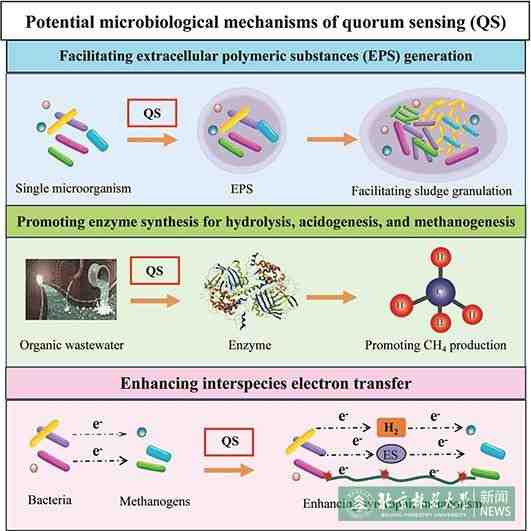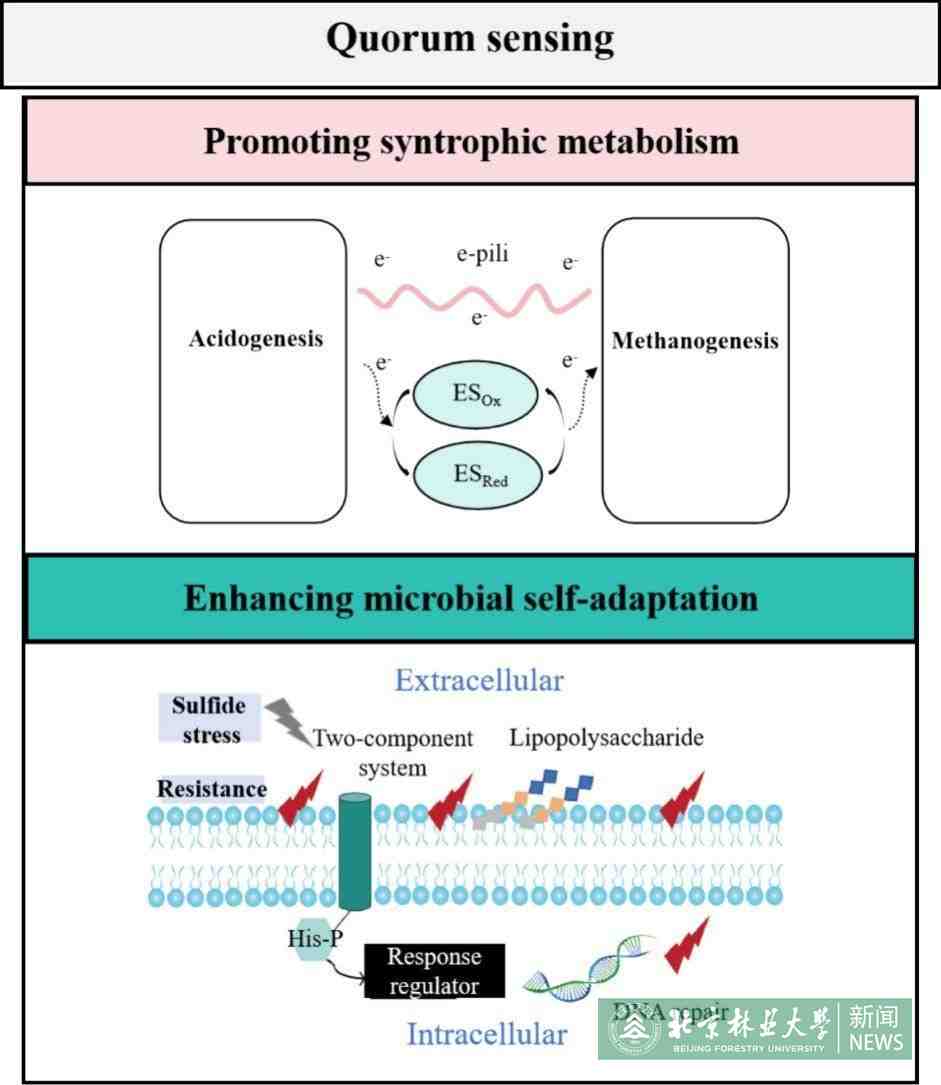Latest news
Professor Zhang Panyue's team from the College of Environmental Science and Engineering has recently published a series of studies on the microbiological mechanisms of quorum densing in anaerobic wastewater treatment. These studies were featured in leading journals within the field of environmental science and ecology, including the Chemical Engineering Journal (with an impact factor of 13.3) and Science of The Total Environment (impact factor of 8.2). The articles are titled "Quorum Sensing in Anaerobic Wastewater Treatment: Potential Microbiological Mechanisms and Enhancement Strategies" and "Genome-Centric Metagenomic Analysis Reveals Mechanisms of Quorum Sensing Promoting Anaerobic Digestion Under Sulfide Stress: Syntrophic Metabolism and Microbial Self-Adaptation" respectively.
Quorum sensing (QS) signaling molecules extensively exist in anaerobic wastewater treatment and have great potential in accelerating anaerobic granular sludge formation, promoting system stability, boosting organic matter degradation, and enhancing CH4 production. However, biological mechanisms for QS improving anaerobic wastewater treatment have yet to be analyzed. Related references are searched on web of science, systematically summarized, compared, and analyzed in this review. The potential biological mechanisms for QS improving anaerobic wastewater treatment are proposed from viewpoints of extracellular polymeric substance synthesis, material metabolism, and interspecies electron transfer. Potential QS enhancement strategies with underlying mechanisms are further summarized by integrating the active roles of QS in anaerobic wastewater treatment, aiming to promote anaerobic wastewater treatment performances by increasing QS signaling molecule concentration. These strategies involve adding exogenous signaling molecules, QS microorganisms and conductive materials. In this review, future challenges and research directions are discussed from theoretical and practical perspectives. This review provides valuable insights into QS regulating anaerobic wastewater treatment and initiate new ideas for improving anaerobic wastewater treatment.

Sulfide stress is a common inhibition factor in anaerobic digestion systems with sulfur-rich feedstocks. Quorum sensing (QS) signaling molecule N-acyl-homoserine lactones (AHLs) possess positive effect on promoting anaerobic digestion. However, the micro-biological mechanisms of AHLs affecting syntrophic metabolism and microbial self-adaptation have not yet been deciphered in anaerobic digestion under sulfide stress. In this study, the CH4 production increased by 21.34 % at 20 μM AHLs addition in anaerobic digestion under sulfide stress. AHLs contributed to establishing potential syntrophic relationship between acidifying bacteria (unclassified_o__Bacteroidales, Lentimicrobium, Acetoanaerobium, Longilinea, and Sphaerochaetaa) and Methanothrix. AHLs promoted syntrophic metabolism by boosting microbial metabolic activity and interspecies electron transfer (IET) process under sulfide stress. For microbial metabolic activity, AHLs promoted the key enzyme synthesis in acidogenesis and methanogenesis. For IET process, AHLs promoted the assembly and synthesis of conductive pili, and synthesis and secretion of riboflavin. Furthermore, AHLs promoted microbial self-adaptation including two component system, lipopolysaccharide biosynthesis, and DNA repair, which were important evidences that microbial resistance to sulfide stress was enhanced by AHLs. Microbial self-adaptation provided favorable foundation and safeguard for syntrophic metabolisms under sulfide stress. These findings deciphered the micro-biological mechanisms of AHLs enhancing anaerobic digestion under sulfide stress.

Chen Le, a doctoral student at the College of Environmental Science and Engineering, is the first author of both papers, with Professor Zhang Panyue as the corresponding author. Beijing Forestry University is credited as the primary institution for these publications.
The research work was funded by National Key Research and Development Program of China (2023YFC3905800) and the National Natural Science Foundation of China (51578068).
Paper links:
https://doi.org/10.1016/j.cej.2024.156150
https://doi.org/10.1016/j.scitotenv.2024.176240
Written by Chen Le
Translated and edited by Song He
Reviewed by Yu Yangyang










